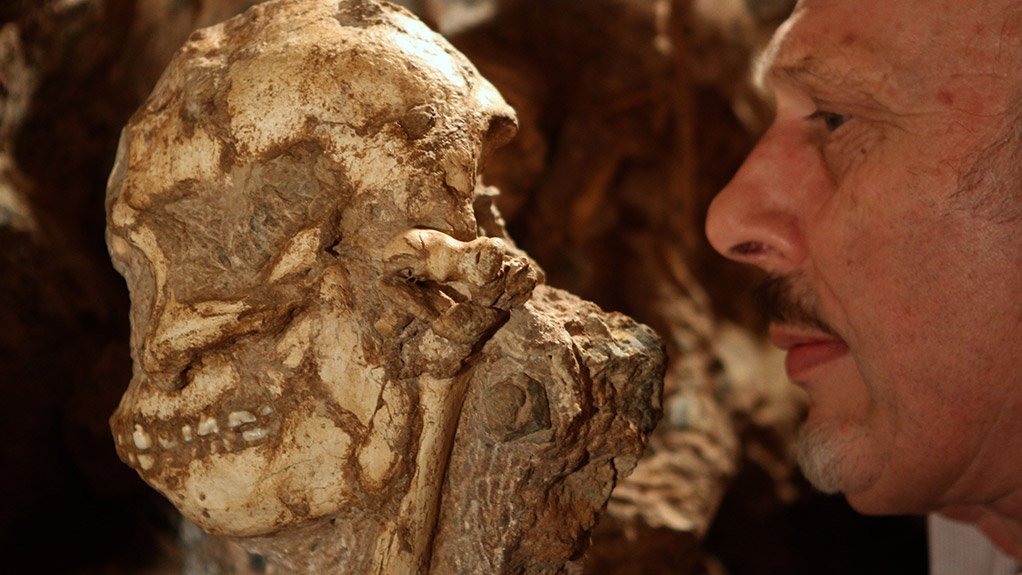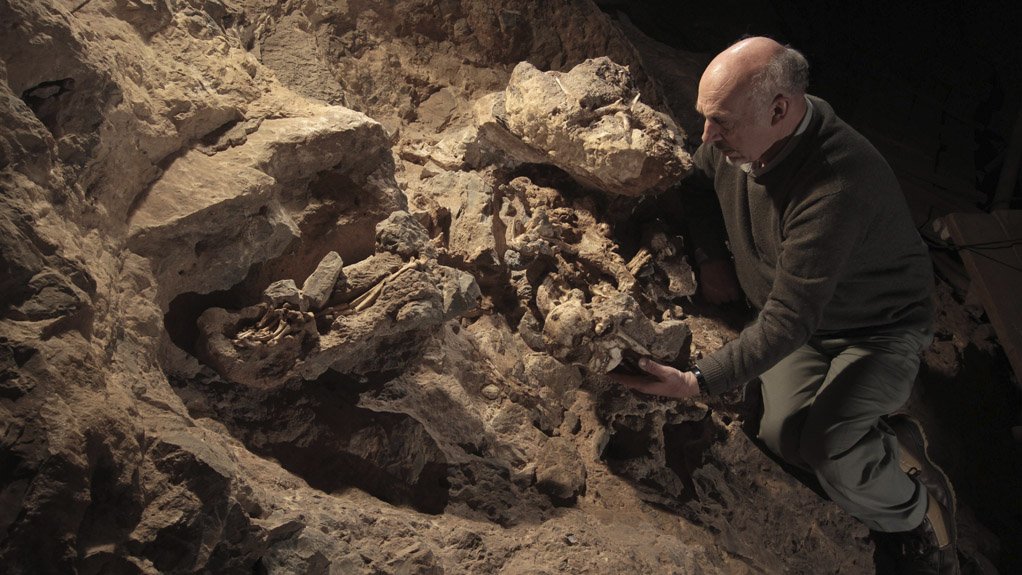The oldest and most complete fossil of an Australopithecus prometheus, named Little Foot owing to the 1994 discovery of four small foot bones in the Sterkfontein caves by University of the Witwatersrand (Wits) Evolutionary Studies Institute Professor Ron Clarke, was unveiled on Wednesday.
The fossil has been dated about 3.67-million years old. Its discovery is expected to add a wealth of knowledge about the appearance, full skeletal anatomy, limb lengths and locomotor abilities of one of the species of early ancestral relatives, called hominids.
Clarke found several foot bones and lower leg bone fragments in 1994 and 1997, among other fossils that had been in rock blasted from the cave decades earlier by lime miners. Stephen Motsumi and Nkwane Molefe, who assisted Clarke, went deep underground into the cave to search for any possible broken bone surfaces that might fit with the bones Clarke had discovered. After two days, they found such a contact in July 1997.
In the 20 years since the discovery, they have been working to excavate and prepare the fossil. The fossil was preserved in concrete-hard rock, called breccia, which had to be removed to reveal the fossil.
“My assistants and I have worked on painstakingly cleaning the bones from breccia blocks and reconstructing the full skeleton until the present day,” says Clarke.
Clarke and a team of international experts are conducting a full set of scientific studies on the fossil. The results of these studies, which will include the scientific value of the find, are expected to be published in a series of scientific papers in peer-reviewed international journals in the near future.
Clarke realised soon after the discovery that the team was on to something highly significant and started the specialised process of excavating the skeleton in the cave up to 2012, when the last visible elements were brought to the surface in blocks of breccia.
“Many of the bones of the skeleton are fragile, yet they were all deeply embedded in the concrete-like rock,” he explains.
“The process required extremely careful excavation in the dark environment of the cave. Once the upward-facing surfaces of the skeleton’s bones were exposed, the breccia in which their undersides were still embedded had to be carefully undercut and removed in blocks for further cleaning in the lab at Sterkfontein,” says Clarke.
The skull of Little Foot shows that it belongs to the species Australopithecus prometheus. The fossil was nicknamed Little Foot by late paleoanthropologist and Wits emeritus Professor Phillip Tobias.
The 20-year-long period of excavation, cleaning, reconstruction, casting and analysis of the skeleton has required a steady source of funding, which was provided by the Palaeontological Scientific Trust (PAST) – a Johannesburg-based nongovernmental organisation that promotes research, education and outreach in the sciences related to human origins.
Among its many initiatives aimed at uplifting the origin sciences across Africa, PAST has been a major research funder at Sterkfontein for over two decades. PAST’s chief scientist Professor Robert Blumenschine labels the discovery “a source of pride for all Africans”.
EMAIL THIS ARTICLE SAVE THIS ARTICLE ARTICLE ENQUIRY
To subscribe email subscriptions@creamermedia.co.za or click here
To advertise email advertising@creamermedia.co.za or click here













